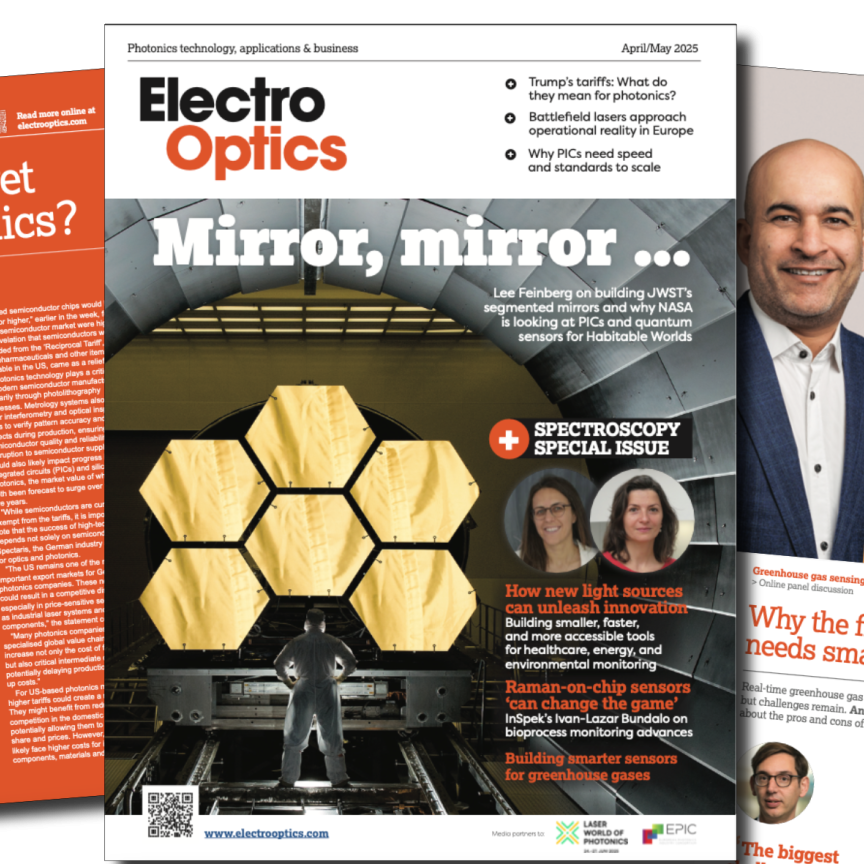Miniature spectrometers with ultra-resolving power could soon be realised, by taking inspiration from the abdominal scales of Australian peacock spiders, an international research team report in Nature Communications.
The size and power of the envisioned devices would make them suitable for applications in space or as wearable chemical detection systems.
Using hyperspectral imaging, scanning electron microscopy, transmission electron microscopy, and imaging scatterometry to analyse the nanostructures on the scales of the Australian peacock spider, researchers identified the mechanisms behind the intense rainbow iridescent signal, consisting of isolated wavelengths within the visible spectrum, which the spiders produce during courtship displays.
The team had previously hypothesised that the rainbow iridescence in the species Maratus robinsoni and Maratus chrysomelas was produced by specialised abdominal scales that functioned as three-dimensional reflective diffraction grating structures. This was confirmed when the researchers used the various imaging techiques to identify the mechanisms as specialised 3D airfoil-shaped nanograting scales.

The abdominal scales of the miniature (2.5mm) Australian peacock spider demonstrate rainbow-iridescence due to naturally occuring 3D reflective diffraction grating structures. The colours of the iridescent patches change depending on the viewing perspective (indicated with arrows). (Image: Jürgen C. Otto.)
The scales increase the resolving power of the diffraction grating through the synergistic effects of their vertically orientated surface nanogratings and the microscopic curvature of their airfoil-shape, to enable separation and isolation of light into its component wavelengths at finer angles and smaller distances than are possible with current engineering technologies.
The team then validated the naturally-occurring mechanism using bio-inspired, actual-size physical prototypes fabricated via two-photon nanolithography.
‘As an engineer, what I found fascinating about these spider structural colours is how these long evolved complex structures can still outperform human engineering,’ said Caltech researcher Radwanul Hasan Siddique. ‘Even with high-end fabrication techniques, we could not replicate the exact structures.’
According to the team, the abdominal scales of the spiders could help researchers design miniature light-dispersive components that can perform under irradiances and at scales not currently possible. This bioinspired approach could allow engineers to develop optical devices, especially spectrometers, with at least 50 per cent smaller length scale for applications where fine-scale spectral resolution is required in a very small package, such as instruments on space missions or wearable chemical detection systems.
The research team comprised researchers from the following universities and institutions: University of Akron; Scripps Institution of Oceanography at the University of California San Diego; California Institute of Technology (Caltech); University of Nebraska-Lincoln; University of Ghent; and University of Groningen.
Related articles
Bio-inspired solar cells boost absorption rates
Antireflection coating makes screens more readable in direct sunlight


